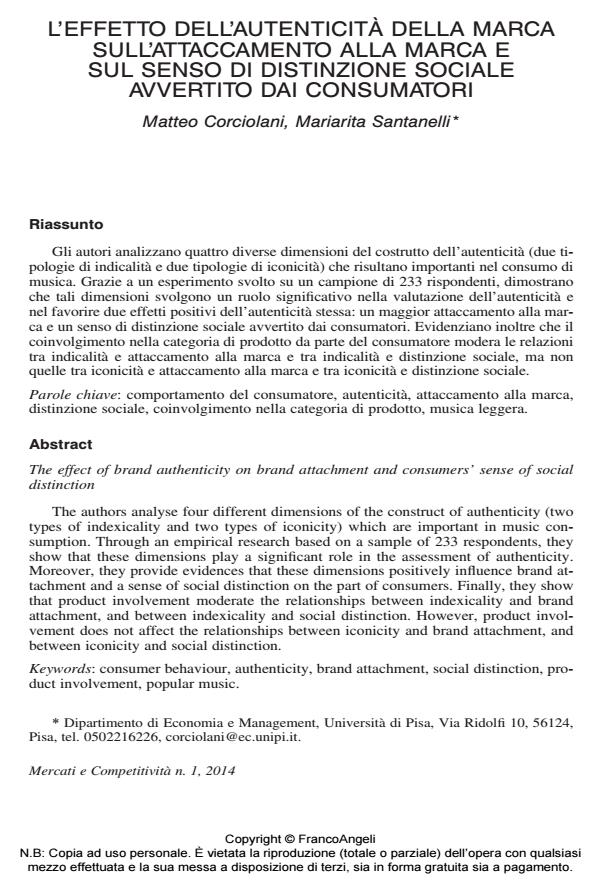The effect of brand authenticity on brand attachment and consumers’ sense of social distinction
Journal title MERCATI E COMPETITIVITÀ
Author/s Matteo Corciolani, Mariarita Santanelli
Publishing Year 2014 Issue 2014/1
Language Italian Pages 23 P. 37-59 File size 721 KB
DOI 10.3280/MC2014-001003
DOI is like a bar code for intellectual property: to have more infomation
click here
Below, you can see the article first page
If you want to buy this article in PDF format, you can do it, following the instructions to buy download credits

FrancoAngeli is member of Publishers International Linking Association, Inc (PILA), a not-for-profit association which run the CrossRef service enabling links to and from online scholarly content.
The authors analyse four different dimensions of the construct of authenticity (two types of indexicality and two types of iconicity) which are important in music consumption. Through an empirical research based on a sample of 233 respondents, they show that these dimensions play a significant role in the assessment of authenticity. Moreover, they provide evidences that these dimensions positively influence brand attachment and a sense of social distinction on the part of consumers. Finally, they show that product involvement moderate the relationships between indexicality and brand attachment, and between indexicality and social distinction. However, product involvement does not affect the relationships between iconicity and brand attachment, and between iconicity and social distinction.
Keywords: Consumer behaviour, authenticity, brand attachment, social distinction, product involvement, popular music
- Il gioco delle parti: la relazione marca-consumatore nel contesto del gaming Silvia Biraghi, Rossella C. Gambetti, in MERCATI E COMPETITIVITÀ 1/2015 pp.97
DOI: 10.3280/MC2015-001006
Matteo Corciolani, Mariarita Santanelli, L’effetto dell’autenticità della marca sull’attaccamento alla marca e sul senso di distinzione sociale avvertito dai consumatori in "MERCATI E COMPETITIVITÀ" 1/2014, pp 37-59, DOI: 10.3280/MC2014-001003